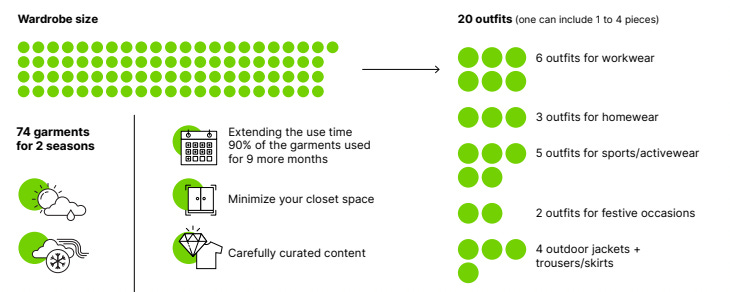The Science: How We Worked It Out
How did we arrive at the number 5? This is how climate scientists crunched the data
If you’ve been searching for a way to make a difference, then this advice, backed up by sound research, data analysis, climate and industry understanding, now gives it to us. The science was applied by the Hot or Cool Institute, a public interest think tank in the UK that explores the intersection between society and sustainability, in a 2022 report entitled Unfit, Unfair, Unfashionable.
The Institute crunched the numbers and worked out that if fashion wanted to stay below the 1.5C target everybody keeps telling us is the CEILING of what we can afford, (and which every fashion house is telling you it's doing because it's immoral to admit otherwise), then the top 16 countries in the G20 need to just - stop consuming. Stop consuming so much, and that's the only way it's going to happen. All the biomaterials, rental, resale, charity shopping, regenerative agriculture in the world is not going to get us there, they say - slowing down our buying habits will.
About the report
The report is guided by three key principles: wellbeing and prosperity, justice and fairness and living within ecological limits. Called ‘Unfit, Unfair, Unfashionable’ (you can download the whole thing here), the gist is whatever we are doing or intending to do, it is nowhere near enough. Fashion has been getting too much of a pass, considering that as an industry, it is one of the worst contributors to climate change. If we want to retain global warming to 1.5°C above pre industrial levels, (which is what every country signed up to in the COP Paris agreement), then consumption needs to reduce by 60% among the G20’s high-income countries, and by 40% in upper-middle-income nations.
Lifestyle carbon footprints are currently at 4.6 tonnes per person per year but they need to go down to 0.7 tonnes per person. For the purposes of the report, the Institute calculated an intermediary figure of 2.5 tonnes by 2030. That requires a 60% reduction from 16 of G20 upper income countries - the worst offenders being Japan, Australia and the UK, and 40% in upper-middle-income nations. The richest 20% cause 20 times more emissions than the poorest - therefore in the UK fashion consumption needs to go down by 83% by 2030, 75% in Italy; in France by 50%. While the richest 20% in the UK emit 83% above the 1.5-target, 74% of people in Indonesia live below sufficiency consumption levels of fashion.
Dr Lewis Akenji, who led the team that compiled the report, says, “The richest 20% are over consuming, while the bottom 20% of income earners are not keeping up. So the narrative that it's the poor people buying cheap fast fashion who are at fault is simply not true.”
Instead of limiting emissions, the report reveals that the triple threat in the fashion industry is coming from:
Consumption per person that is rising sharply
Goods which are just getting cheaper
A shorter time use for each item
As such, the fashion sector is set to DOUBLE emissions by 2030. Which is a horrific stat. Some more detail:
Around 10% of emissions in the industry is caused by disposal - export, incineration, landfill, second hand - so donation or exporting should not be a priority. Instead, just buying fewer items alone has the greatest impact.
Also reducing washing and drying and increasing use time for each garment (fact here: 75% of garments are not used again after 6 months of wear).
The sufficiency wardrobe
The report also went as far as to advise what a conscious, just wardrobe should consist of. 74 items in total, they reckon. It was calculated on the idea that it will meet needs, allow a dignified social presence and stay within climate targets. This is how the report describes it:
Just to put it in perspective, most of the workers who make our garments come from lower income countries like Indonesia and Bangladesh, where they could nowhere near afford to have a 74 piece wardrobe. In fact, they can’t afford food, or books for their kids.
“Most of the existing climate mitigation approaches towards net-zero goals prioritise production, while disregarding or downplaying reduction in consumption levels and the adoption of alternative consumption modes,” the report says. We need a fundamental cultural shift to make this happen.




This article would feel a lot more satisfying if you actually included that the report gave 5 items as a recommendation and that's why you're using 5. Currently it doesn't actually answer "How did we arrive at the number 5?" Unless there's more content in the paid version.